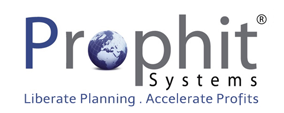THE ‘INTERNET OF THINGS’ AND SUPPLY CHAIN SOLUTIONS

Whichever way you look at it, there is a dramatic shift underway. The physical world is evolving into an information system that sees day-to-day objects communicating and analysing their own environments. This shift enables the physical world to analyse its own complexity and to respond to the data it generates.
The Internet of Things (IoT), or the Internet of Everything (as Gartner calls it) is either here or to be expected shortly, depending on which experts you follow or who’s blog you’re reading.
Gartner forecasts a 30-fold increase in devices that are connected to the Internet by the end of this decade – this equates to 26 billion units, each generating masses of data. This information will have a major impact on the nature and volume of information available to supply chain managers and operators.
We feel the real opportunity for supply chain management lies in two main areas. The first is real time tracking of supply chain execution. The second, and the aspect of the IoT that we are closely keeping an eye on is demand forecasting and predictive planning.
Currently an overwhelming majority of demand forecasting is based on historic data. Although this method has some shortcomings in terms of accuracy on a day-to-day level, it delivers a view of the world that everyone knows to be slightly flawed but can be compensated for (at a cost).
The major opportunities come sharply into focus, when there are massive and sudden shifts within an industry that have not been predicted.
A great example of this type of disruption was when SARS caused a major upheaval in the electronics supply chain on a global level. Australia, which ironically had no diagnosed cases of SARS, suffered an estimated $1 billion loss in the economy as a consequence of this outbreak.
What the IoT now allows is for more variables to influence the manner in which a supply chain operates. Human and market behaviours are now able to play a role in a company’s planning and forecasting. The connectivity amongst people, places, objects and company systems allows for analysis, tracking and supply chain optimisation in real time.
While the world is excited by what the IoT will deliver, something that is less often discussed is how current supply chain solutions and their capabilities will have to adapt to accommodate the volume of data that will become available. Where current data processing can be compared to water running from a garden hose, through a funnel into a bucket, the data sets that will potentially be delivered by the IoT could resemble water gushing from a fire hydrant – basically pulverising the funnel and crushing the bucket.
IoT is the opportunity for supply chain to take the lead within an organisation.
As a supply chain solutions provider we are working with our most forward thinking clients to jointly find this path. Our focus is to have our clients constantly refine their supply chain’s networks in order to adapt quickly to new inputs and new events as the information becomes available.
With advanced analytics we are able to capture relevant data, glean insights into any repercussions and find the best course of action.
We believe the next stage in this IoT evolution is the funnelling of the outputs of these analytics. It is becoming necessary to identify and stream those actions that can be executed autonomously , those that can wait for the next review cycle and those that warrant immediate attention and escalation for possible intervention.


Umckyr
spironolactone 25mg sale – naltrexone 50mg drug naltrexone buy online